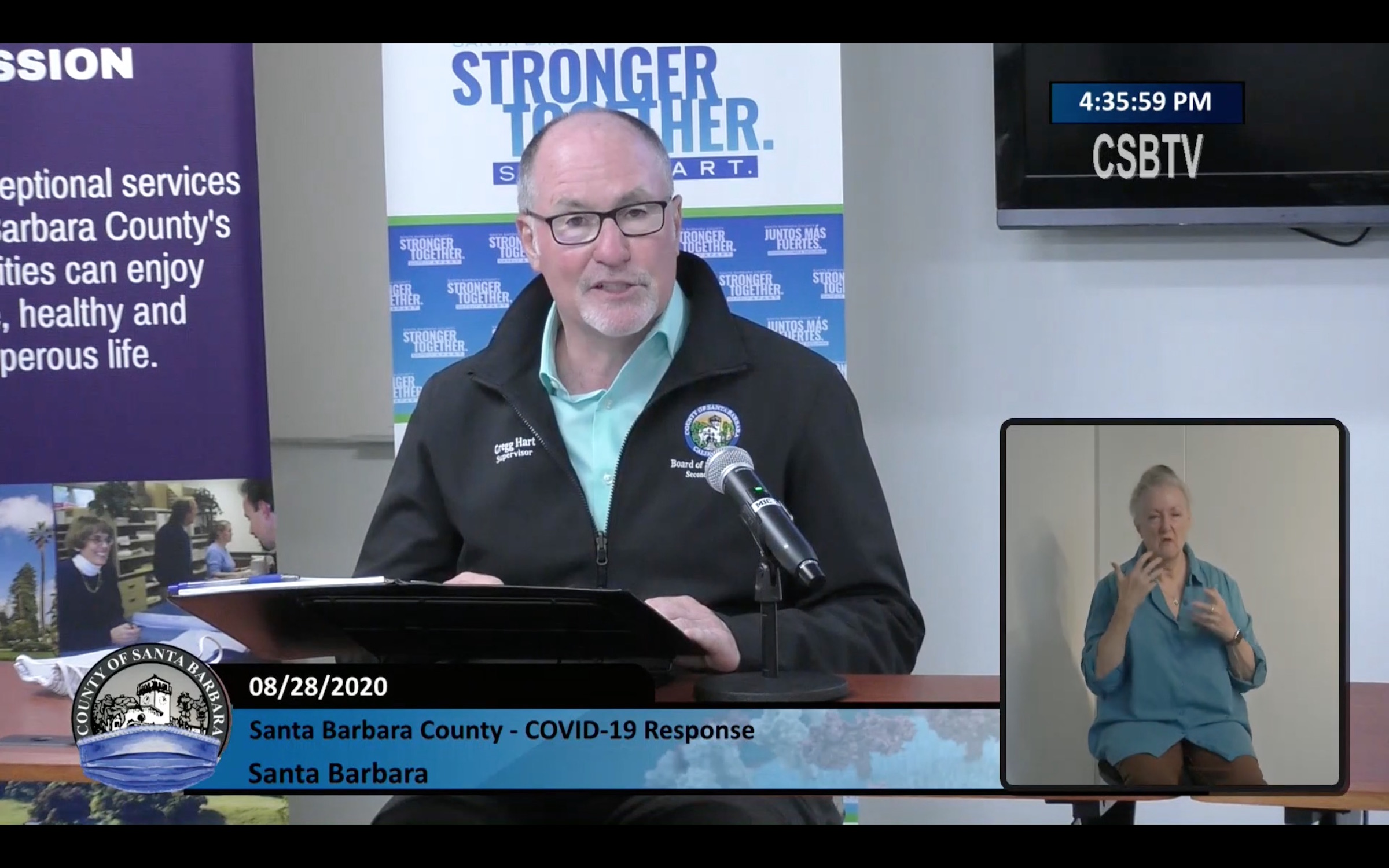Newsom Puts Brakes on COVID ‘Dimmer Switch’
Governor Unveils Four-Colored System for Turning Lights Back on in Time of COVID-19

Anyone in a big fat hurry about getting the economic lights turned back on in the time of COVID had better ask their doctors for a renewable prescription for chill pills. It’s not happening anytime soon. Unless of course, you’re hoping to get your hair cut or styled indoors. That was the big takeaway from this Friday’s press conference held by County Public Health Officer Dr. Henning Officer, Health Director Van Do-Reynoso, and Supervisor Gregg Hart.
The big news of the day was the four-colored, tiered system just announced by Governor Gavin Newsom that afternoon for re-restarting the economy. The new system, to use Newsom’s language, will be more “stubborn” and “stringent” than the system in effect since earlier this summer when he gave all 58 counties the authority to individually determine whether they had the capacity to do enough testing and tracking and tracing to keep COVID under wraps.
The new color-codes tier system goes from purple to red to orange to yellow, purple being the most restrictive in terms of what’s allowed and yellow being the most wide open. Santa Barbara, Ventura, and San Luis Obispo counties are all purple. In fact, 87 percent of the state residents, said Supervisor Gregg Hart, live in purple counties. Only 12 percent live in red counties, one percent in orange and one-tenth of one percent in yellow.
Translated into simplified terms, in purple counties, there is no indoor restaurant dining. In red counties, restaurants will be allowed to provide 25 percent of its service indoors.
As a practical matter, the new color-coded system will not cause any businesses currently operating — at least legally — to scale back. It will, however, put a significant brake on their ability to expand. Before any county can go from one tier to a lower one, it must wait 21 days. And for two weeks running, it must meet new specific thresholds in terms of new daily cases (calculated weekly) and testing positivity rates. And to pass “Go,” it must meet both thresholds.
Although Santa Barbara County has been trending significantly downward in both categories the past two weeks — also reporting some of the lowest hospitalization numbers in months — the new standards, announced suddenly this week, could prove challenging to meet. To transition from purple to red, Santa Barbara can report no more than seven new cases per 100,000 people per day. Given the county’s population of 450,000, that translates to no more than 32 new cases a day. Not since June has the county reported new case numbers that low. In the past seven days, Santa Barbara County Health officials have reported the following new cases: 67 (Friday) 35, 70, 61, 43, 81, and 70.
Governor Newsom, no doubt hoping to provide some smidgen of good news to the counties, announced in the same breath that the state is now allowing barbershops and hair salons to offer their customers indoor hair care services starting Monday. Otherwise, the dance between the governor’s office and county has been somewhat strained and fraught. Counties have complained of being kept in the dark and poor communication from the governor. County Public Health Director Do-Reynoso said the county was first notified of the proposed changes late Wednesday, but only in the sketchiest details. The final, fuller picture, she said, was not announced until Friday afternoon. On the flip side, the governor has blamed counties for flubbing the first re-opening, complaining that county health officials allowed more businesses to open, relying too much on the attestations of business owners, before they had the testing capacity to adequately monitor the situation, not to mention the ability to track-and-trace.
The state and county are both operating testing sites to expand the availability of testing and increase the turnaround time. A few months ago, for example, it took five to 10 days to get test results back, rendering their medical and public health utility questionable at best. Now it’s about half that.
Complicating matters further for Santa Barbara, the County Jail reported 21 new inmates tested positive Friday. And UCSB is about to open for virtual learning, but Isla Vista is occupied nonetheless. This past week has seen multiple high-profile outbreaks that coincided with the opening of college campuses throughout the country. The extent to which the same thing might happen in Isla Vista is of significant concern to public health officials. To help making testing easier and more accessible, they are shutting down the testing center at Earl Warren Showgrounds and relocating it to the Goleta Valley Community Center on September 3.
In the meantime, 13 schools in Santa Barbara County have sought waivers from state and county public health officials that, if granted, would allow them to offer in-person education. Of those, one is a Montecito public elementary school and the other 12 are private schools.


